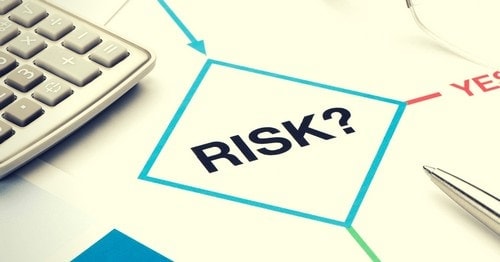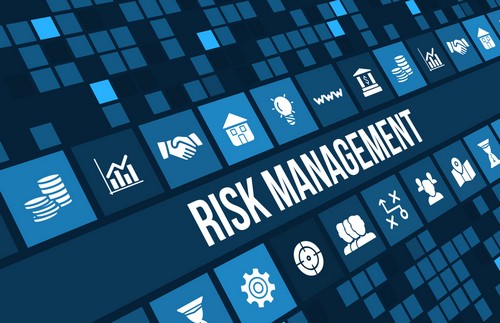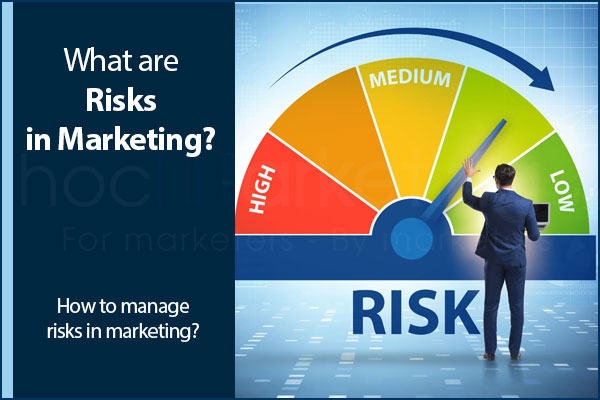
Mastering Risk Management: A 7-Step Process

Risk management involves identifying potential threats to assets and analyzing their impact Follow a 7-step process including establishing context, identifying risks, assessing them, treating them, creating a plan, implementing it, and reviewing and evaluating it
Risk management involves identifying, assessing, and analyzing potential threats or risks that could impact an organization's finances and earnings. This is followed by implementing strategies to minimize or control the impact of unforeseen events, as well as maximize opportunities for growth.
Understanding the concept of Risk Management
Risk management is a complex decision-making process that takes into account various factors such as social, economic, political, and engineering considerations. It involves evaluating potential hazards and associated risks to develop and analyze regulatory options that can provide the optimal level of security and protection against unforeseen events. To determine the appropriate response to a particular risk, both regulatory and non-regulatory options are considered, taking into account legal, behavioral, and economic factors.
The risk management process involves identifying potential areas of risk or threat, developing a comprehensive plan, and continuously evaluating and integrating that plan. This includes measuring and assessing the risk, followed by developing effective strategies for managing those risks. Insurance may be taken out to protect against losses, or to hedge against interest rate increases or falling investment prices.
During the risk management process, one must determine whether to accept the potential exposure or decrease vulnerabilities through risk mitigation or cost-effective controls. This process involves three steps - risk evaluation, emission and exposure control, and risk monitoring - which are meticulously executed to yield accurate results and inform optimal decision-making.
This way by following a proper approach the possibilities of risks are minimized and unfavorable deviations are avoided.
7 Steps in Process of Risk Management
1) Establishing the context
The initial step of the risk management process is crucial as it sets the foundation for the entire process. Contextualizing the risk management plan is done in this step, which includes planning for the rest of the process. It's important to note that some scopes may be mapped out in this stage, but they may not be necessary for the overall plan.
2) Identifying the risks or threats
Identifying the objectives of stakeholders is the next crucial step in evaluating risks. Once these objectives are clear, a framework can be established for the entire process. From there, an agenda can be set for both identifying and analyzing the plan.
After establishing the context, the next crucial step in risk management is identifying potential risks. Unforeseen events can cause significant problems, which is why it's essential to identify them. To start the risk identification process, the primary source of the problem must be determined.
Having a thorough understanding of the organization is essential for identifying risks in the risk management process. It's important to be knowledgeable about the market's typical environments and how it operates within them, including social, legal, economic, climatic, and political factors. Additionally, understanding the organization's strengths and weaknesses is crucial in identifying potential risks.
It is crucial for individuals to have a thorough understanding of the potential risks associated with unplanned losses, manufacturing processes, management systems, and the overall business environment. The analysis of these risks must be conducted with utmost precision to prevent any significant losses for the organization. Ultimately, the foundation of effective risk management lies in the identification and evaluation of potential risks.
3) Assessment of the risks
Once the potential risks have been identified, it is essential to evaluate the severity of their possible impact and the probability of their occurrence. This assessment process involves making informed estimates and calculations to determine the most likely scenarios.
4) Potential risk treatment
One of the major challenges in conducting a risk assessment is the lack of statistical information on the frequency of risk occurrence in previous incidents. To effectively identify primary risks, it is crucial for the risk assessment to provide this type of data.
Once the risk identification and assessment process is complete, the focus shifts to managing the risks. However, it is crucial to determine the specific type of risk before proceeding with potential risk treatments. Risks can generally be categorized into one of the following four categories:
The transfer of risk involves one party transferring some or all of the risk exposure losses to another party at a specified cost. This can be achieved through a variety of techniques outlined in the individual contract. However, risk avoidance, or neglecting circumstances that carry certain risks, can also lead to losses. While it may seem like a safe option, avoiding risks can also mean missing out on potential gains. For example, choosing not to enter a business to avoid risk also means missing out on potentially lucrative opportunities for profit.
16. When it comes to managing risks, there are two methods that businesses can use to retain losses: captive insurance and self-insurance. Captive insurance involves setting up a subsidiary company to provide insurance coverage, while self-insurance means the business assumes the financial responsibility for potential losses. Additionally, businesses can also take measures to control risks by either avoiding them altogether or minimizing potential losses.
5) Creating the plan
To effectively create a risk management plan, it is crucial to carefully consider and decide on the various methods that can be used for each individual risk. These decisions should be meticulously recorded and approved by the appropriate level of management to ensure accuracy and accountability.
A well-designed plan should feature security controls that are both practical and efficient. Additionally, it should outline a clear timeline for implementing the plan and assign specific individuals to take responsibility for executing various components of it. It is crucial to carefully evaluate the risk management plan to ensure its effectiveness.
6) Implementing the risk management plan
Once all the plans have been successfully followed, the final step is implementation. To safeguard against unforeseen risks, one can consider purchasing insurance policies. These policies can help mitigate the impact of any potential risks while also reducing financial burden.
This way almost all of the risk can be avoided without even making any sacrifice o the goals of the entity or reducing those of others.
7) Review and the evaluation of the plan
During the initial stages, it is uncommon for risk management plans to be flawless. However, as the plan is implemented, adjustments can be made based on practical application, losses, and experiences. The knowledge gained can also aid in making informed decisions for future risk management strategies.
It is crucial to execute all of these procedures with utmost precision in order to attain optimal outcomes and make a well-informed decision that safeguards the company from potential risks or threats.

















